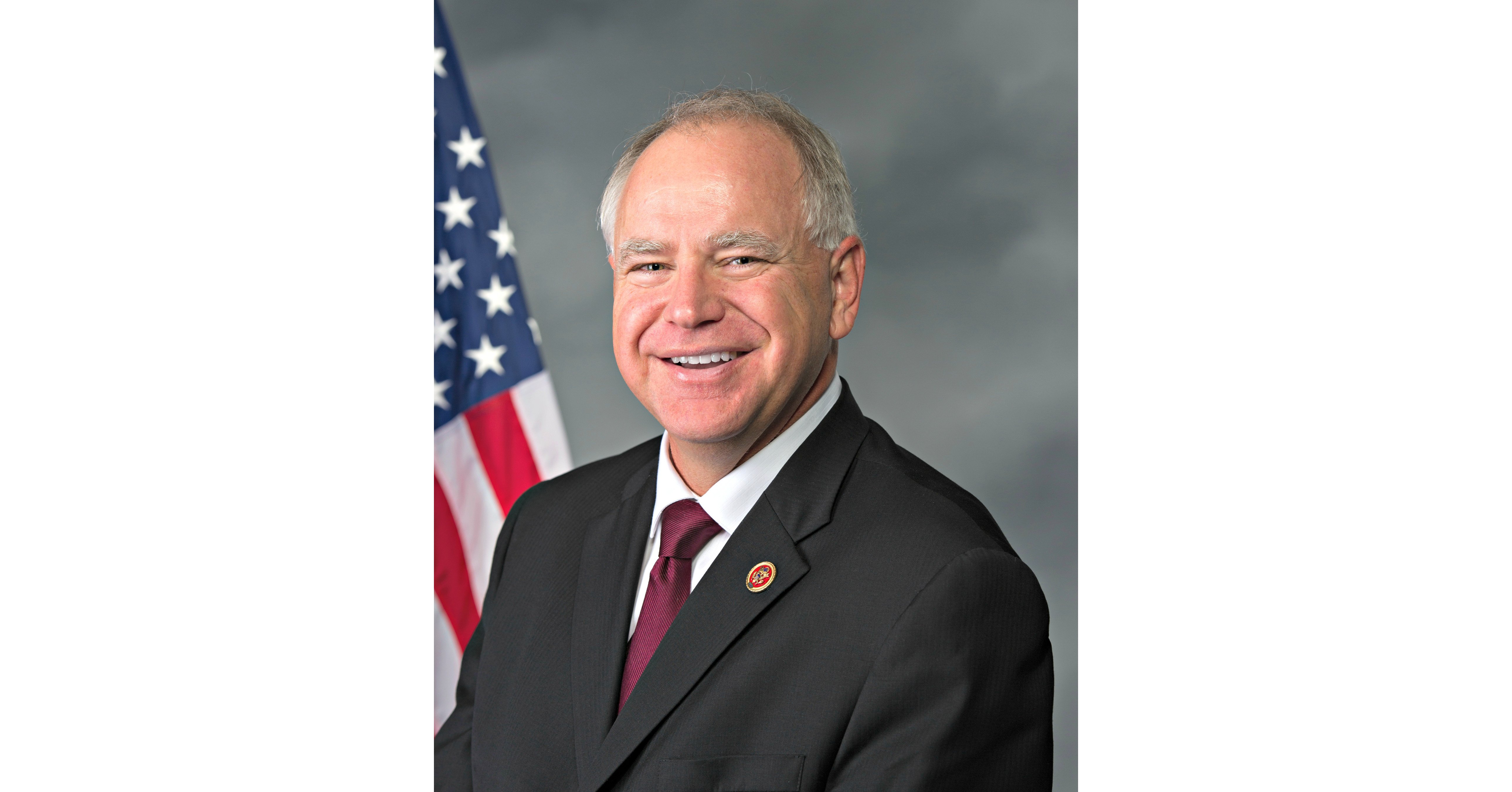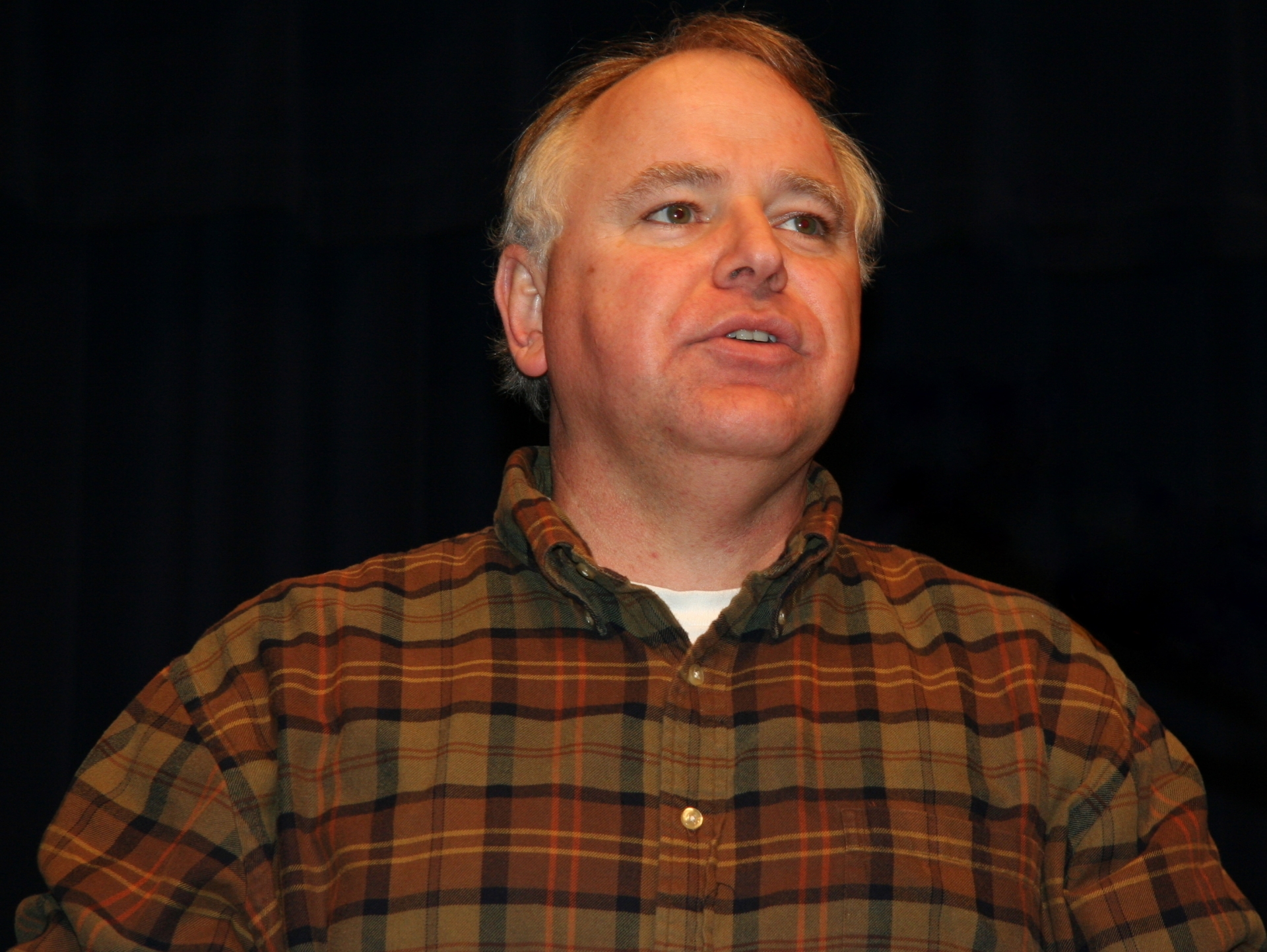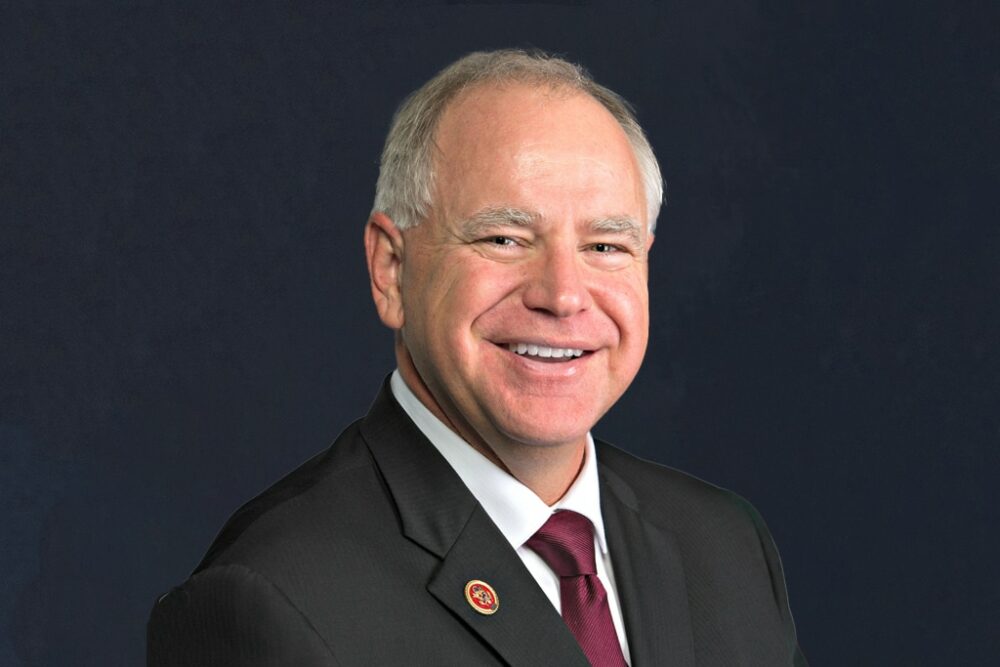Tim Walz: The Governor of Minnesota

Tim Walz, the 41st Governor of Minnesota, has a unique background that blends military service, education, and public service. He began his career as a teacher and later served in the United States Army, deploying to Iraq during the Iraq War. Following his military service, he returned to Minnesota and entered politics, serving as a U.S. Representative for Minnesota’s 1st congressional district from 2007 to 2019.
Political Background and Rise to Governorship
Tim Walz’s political journey started in 2006 when he won a special election to represent Minnesota’s 1st congressional district in the U.S. House of Representatives. He was re-elected four times, demonstrating his strong appeal to the voters in his district. During his time in Congress, Walz gained recognition for his bipartisan work on issues such as veterans’ affairs and education.
In 2018, he decided to run for Governor of Minnesota, challenging the incumbent Republican, Mark Dayton. Walz’s campaign focused on issues like education, healthcare, and economic development. He emphasized his experience as a teacher, soldier, and Congressman, highlighting his understanding of the challenges faced by Minnesotans. His campaign resonated with voters, and he ultimately won the election, becoming the 41st Governor of Minnesota.
Key Policy Initiatives and Their Impact
Governor Walz’s administration has been marked by several key policy initiatives aimed at improving the lives of Minnesotans. These initiatives include:
- Education: Walz has made education a top priority, advocating for increased funding for public schools and promoting early childhood education. His administration has focused on closing the achievement gap and ensuring that all students have access to a quality education.
- Healthcare: Walz has worked to expand access to affordable healthcare, particularly for individuals and families struggling with medical costs. He has supported the expansion of Medicaid and implemented policies to reduce prescription drug costs.
- Economic Development: Walz has focused on creating jobs and boosting the Minnesota economy. His administration has supported investments in infrastructure, renewable energy, and small businesses.
- Climate Change: Recognizing the urgent need to address climate change, Walz has committed to reducing greenhouse gas emissions and promoting clean energy solutions. He has implemented policies to encourage the use of renewable energy sources and reduce carbon footprints.
Comparison with Previous Governors
Tim Walz’s political views and policies differ in some ways from those of his predecessors. He is generally considered to be more progressive than some of his predecessors, particularly on issues such as healthcare and climate change. He has also been praised for his collaborative approach to governing, seeking consensus and working with both Democrats and Republicans to find common ground.
Challenges and Opportunities
Minnesota faces a number of challenges under Governor Walz’s leadership, including:
- Economic Inequality: The gap between the wealthy and the poor continues to grow in Minnesota, posing challenges to economic stability and social equity.
- Infrastructure: Minnesota’s aging infrastructure requires significant investment to maintain and improve. This includes roads, bridges, and public transportation systems.
- Education Funding: Funding for public schools remains a contentious issue, with advocates calling for increased investment to improve educational outcomes.
- Climate Change: The state faces the growing challenges of climate change, including extreme weather events and rising temperatures.
Despite these challenges, Minnesota also has a number of opportunities under Governor Walz’s leadership. These opportunities include:
- Economic Growth: Minnesota’s economy is diverse and strong, offering opportunities for continued growth and job creation.
- Innovation: The state is a hub for innovation, with a strong technology sector and a growing entrepreneurial ecosystem.
- Quality of Life: Minnesota is known for its high quality of life, with a strong education system, access to healthcare, and a vibrant cultural scene.
Tim Walz’s Role in Minnesota’s Economy: Tim Walz Minnesota

Minnesota’s economy is a diverse one, with strengths in various sectors, each contributing significantly to the state’s overall prosperity. Governor Tim Walz has played a crucial role in shaping economic policies that aim to foster growth and create opportunities for Minnesotans.
Key Economic Sectors in Minnesota
Minnesota’s economy is characterized by a diverse range of sectors, each playing a vital role in driving growth and job creation.
- Manufacturing: Minnesota has a long-standing history as a manufacturing hub, with industries like medical devices, food processing, and machinery contributing significantly to the state’s economy.
- Agriculture: Minnesota is known as the “Land of 10,000 Lakes,” but it’s also a major agricultural producer, with dairy, corn, and soybeans being key contributors to the state’s agricultural output.
- Technology: The technology sector has emerged as a significant driver of economic growth in Minnesota, with companies in areas like software development, data analytics, and cybersecurity making a substantial impact.
- Healthcare: Minnesota is home to renowned healthcare institutions and research centers, making healthcare a major industry that employs a significant portion of the state’s workforce.
- Tourism: With its natural beauty, vibrant cities, and cultural attractions, Minnesota draws a significant number of tourists each year, contributing to the state’s economy through tourism-related businesses.
Impact of Tim Walz’s Policies on Economic Sectors
Governor Walz’s policies have aimed to support and strengthen various economic sectors in Minnesota.
- Manufacturing: Walz has emphasized policies aimed at supporting manufacturers, such as investing in infrastructure, promoting workforce development programs, and advocating for trade agreements that benefit Minnesota businesses.
- Agriculture: Walz has focused on policies that promote sustainable agriculture practices, provide support for farmers facing challenges, and ensure the availability of resources for agricultural research and development.
- Technology: Walz has prioritized initiatives that foster innovation and entrepreneurship in the technology sector, including investments in research and development, support for startups, and efforts to attract tech talent to Minnesota.
- Healthcare: Walz has been a strong advocate for expanding access to affordable healthcare, supporting healthcare providers, and promoting investments in medical research and innovation.
- Tourism: Walz has recognized the importance of tourism to the state’s economy and has supported initiatives to promote Minnesota as a destination for leisure and business travelers.
Minnesota’s Economic Performance Under Tim Walz
Minnesota’s economy has experienced periods of growth and challenges under Governor Walz’s leadership.
- Job Creation: Minnesota’s unemployment rate has generally remained below the national average, indicating a strong job market. The state has experienced job growth in various sectors, including healthcare, education, and technology.
- Economic Growth: Minnesota’s economy has shown signs of growth, with the state’s GDP increasing in recent years. However, the pace of growth has been affected by factors such as the COVID-19 pandemic and global economic conditions.
- Budgetary Stability: Walz has focused on maintaining a balanced budget, prioritizing investments in education, infrastructure, and healthcare while also addressing the state’s long-term fiscal health.
Strategies Implemented by Tim Walz to Promote Economic Growth and Job Creation
Governor Walz has implemented various strategies to promote economic growth and job creation in Minnesota.
- Infrastructure Investment: Walz has prioritized investments in transportation infrastructure, including roads, bridges, and public transit, to improve connectivity and facilitate economic development.
- Workforce Development: Walz has focused on expanding access to education and training programs to equip Minnesotans with the skills needed for in-demand jobs.
- Business Support: Walz has implemented policies aimed at supporting small businesses, including tax breaks, loan programs, and access to resources.
- Innovation and Entrepreneurship: Walz has prioritized initiatives that foster innovation and entrepreneurship, including investments in research and development, support for startups, and efforts to attract tech talent to Minnesota.
Tim Walz’s Public Image and Political Legacy

Tim Walz, the current Governor of Minnesota, has a public image shaped by his political experience, leadership style, and responses to significant challenges. His tenure has been marked by both praise and criticism, contributing to a complex and evolving public perception.
Factors Influencing Tim Walz’s Public Image
Tim Walz’s public image is influenced by a variety of factors, including his background, policy positions, and communication style.
- Military Service and Rural Roots: Walz’s service in the U.S. Army and his upbringing in a small Minnesota town have contributed to his image as a relatable and down-to-earth leader. These experiences resonate with many Minnesotans, particularly those in rural areas.
- Bipartisan Approach: While a member of the Democratic Party, Walz has often emphasized his willingness to work across the aisle, particularly on issues like education and infrastructure. This has earned him some support from Republicans, though it has also drawn criticism from some Democrats who view it as a sign of compromise.
- Communication Style: Walz is known for his straightforward and often humorous communication style. He frequently uses social media to connect with Minnesotans and address issues directly. This approach has helped him build a strong personal brand, but it has also been criticized by some as lacking in depth or substance.
- Handling of the COVID-19 Pandemic: Walz’s leadership during the COVID-19 pandemic has been a defining moment in his governorship. While his decisions, such as mask mandates and business closures, have been praised by some for prioritizing public health, they have also been criticized by others for being too restrictive and damaging to the economy.
Potential Impact of Tim Walz’s Leadership on Minnesota’s Future
Tim Walz’s leadership is likely to have a significant impact on Minnesota’s future, particularly in areas like education, healthcare, and economic development.
- Education Reform: Walz has made education a top priority, advocating for increased funding and reforms aimed at improving student outcomes. His commitment to education could lead to long-term improvements in Minnesota’s workforce and economy.
- Healthcare Access: Walz has also expressed a strong commitment to expanding access to affordable healthcare. His efforts to address the issue could have a significant impact on the health and well-being of Minnesotans.
- Economic Development: Walz has focused on attracting businesses and investments to Minnesota, aiming to create jobs and boost the state’s economy. His policies in this area could influence the state’s future economic growth and prosperity.
Comparison of Tim Walz’s Leadership Style with Other Prominent Political Figures in Minnesota, Tim walz minnesota
Tim Walz’s leadership style can be compared and contrasted with other prominent political figures in Minnesota.
- Jesse Ventura: Like Ventura, Walz has a background outside of traditional politics, which has contributed to his appeal as an outsider. However, unlike Ventura, Walz has been more willing to work with the establishment, building relationships with both Democrats and Republicans.
- Al Franken: Both Walz and Franken are known for their use of humor and their ability to connect with voters on a personal level. However, Franken’s background as a comedian and satirist gave him a more distinct persona than Walz, who has been more focused on policy and governance.
- Mark Dayton: Walz and Dayton both faced significant challenges during their time in office, including economic downturns and political polarization. While Dayton was known for his reserved and deliberate approach, Walz has been more outgoing and proactive, often taking to social media to engage with the public.
Tim walz minnesota – Tim Walz, the governor of Minnesota, has been in the news a lot lately. He’s been dealing with a bunch of stuff, like the whole COVID-19 thing and the protests last summer. But, he’s also got to keep an eye on international stuff, like the iran attack , which could have a big impact on the world, and therefore, Minnesota too.
It’s a tough job, but he seems to be handling it pretty well, even though he’s probably stressed out of his mind.
So, Tim Walz is the governor of Minnesota, right? Like, he’s totally the boss of the whole state. Anyway, I was scrolling through TikTok the other day and saw this trend called “very mindful very demure” very mindful very demure tiktok which is like, super chill and all about being graceful.
I think it’s kinda cool, you know? Reminds me of Minnesota’s vibe, which is like, peaceful and all that. Maybe Tim Walz should hop on the trend, lol.
